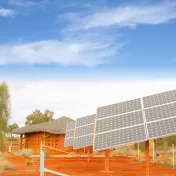The outbreak of Coronavirus in late 2019 has brought life to a screeching halt for people across the world. After being under lockdown for months, governments across the globe are designing green recovery as an umbrella term to revive all nations from the pandemic. Despite their varying approaches, some common green recovery themes have emerged across organisations. These are mainly green and inclusive jobs, resilience building, social protection systems, clean energy mechanisms, green financing, prioritising small businesses etc. On similar lines, UN Secretary-General has urged governments to take six actionable steps that range from investing in green jobs, ending dependence on fossil fuels and working together to not rescuing polluting industries, integrating climate risks in policy decisions and leaving no one behind.
Key Elements of India’s Recovery
India’s relief package worth Rs. 20 lakh crores (US$266 billion)[1] – released two months after the first confirmed COVID-19 death on 12th March – lays down the government’s vision of Atmanirbhar Bharat (Self-Reliant India) and consists of 5 pillars: economy, infrastructure, technology-driven system, vibrant demography and demand. Next to immediate cash and food provisions worth Rs. 3500 crores and liquidity injections in different sectors it also consists of national economic development plans:
- Assistance to rural areas through loans and moratoriums, refinancing regional banks and allocation of Rs. 40,000 crores to National Rural Employment Guarantee Act (NREGA). Upon identifying post-harvest management infrastructure as a crucial gap, Rs. 1 lakh crore has been assigned to Agri-Infrastructure Fund and Rs. 10,000 crores for formalising Micro Food Enterprises (MFE). Further assistance to marine sector, animal husbandry, animal control, herbal cultivation and other initiatives cover major aspects of rural livelihoods.
- Insurance coverage to factory workers to all districts and in all establishments employing 10 or more workers. The definition of ‘inter-state migrant worker’ has been altered to include self-employed workers in addition to the ones directly employed by an employer or through contractors.
- An Emergency Health Response Package of Rs. 15 crores along with investment into Affordable Rental Housing Complexes for migrant workers/urban poor has also been announced. Special credit facility and digital payment solutions will be provided to keep street vendors afloat.
- Rs. 3 lakh crore worth collateral-free loans to Micro, Small and Medium Enterprises (MSMEs) along with subordinate funds and equity infusions. Assurances to revise MSMEs’ definition and bring in legal amendments have also been made. Partial Credit Guarantee and Special Liquidity Schemes have been launched for Micro Finance Institutions (MFIs) and Non-Banking Financial Corporations (NBFCs).
- Industrial upgradation has been sought through fast-track investment clearances by an empowered group of secretaries, ranking of states on investment attractiveness and promotion of new champion sectors. Liberalising the coal sector, enhancing private investments in the mineral sector, raising FDI limit in the defence sector, making India a global hub for aircraft maintenance, repair and overhaul among other steps are also part of the relief package.
India’s Self-Reliance Plan for a Green Recovery
The government’s move to green jobs has for example been made through the deployment of Compulsory Afforestation Fund (CAF), which will meet the twin objectives of green employment as well as increasing carbon sink. However, these funds have been in existence since 2016 and the need is now for proactive steps like promotion of local sustainable industries such as bamboo, circular economy actions such as waste management etc. The financial assistance endowed to NREGA is crucial to rural economy and climate adaptive infrastructure. However, it is its monitoring and compliance through the immediate payment of wages even in the remotest areas, increase in jobs and job days as well as sensitivity to gender-gap that will sustain green and inclusive job growth as prescribed by green recovery. The pro-poor package for urban poor, migrant workers and farmers aims to extend social security and can go a long way in securing the most vulnerable class:
- The amendments to Essential Commodities Act, 1955 now allow barrier-free trade of farm produce across Indian states and empower farmers to partner with aggregators, processors and exporters. This move not only allows private players into the market, thereby opening up the sector to new technology and practices, but also shifts the risk from farmers to sponsors. However, its ability to safeguard poor and vulnerable farmers against big corporates is an aspect highly contested in key agrarian states of the country.
- Plans to fund re-skilling of retrenched employees and formalizing informal labour through appointment letters in addition to extending social security to the poor are vital steps addressing inclusivity. Together, these measures can build an economy resilient to volatile growth rates as well as growing global pandemics. Despite being criticised for watering down labour rights, Industrial Relations Code Bill, 2020, Code on Social Security Bill, 2020 and Occupational Safety, Health and Working Conditions Code Bill, 2020 have been passed to promote ease of doing business. Labour grievance redressal and strict implementation of social security schemes is what will prove to be resilient as well as inclusive in the long-run.
MSMEs not only contribute 29% to India’s GDP and make up for 50% of its exports, but are also the second-largest employer in the country, after agriculture. The focus laid on them through the relief package is thus well placed. Both financial as well as technical aid are important for Indian economy to bounce back. Despite the global fall in oil prices, India has seen a rise in petrol and diesel prices with a direct bearing on the transport sector. However, this measure should be designed not merely to boost government’s revenue during this economic downfall, but rather as a step towards ecological and social sustainability.
With an already ambitious renewable energy (RE) target in place, strategies for RE infrastructure to penetrate in a fashion that augments the capabilities of people across geographies is a concern that now requires attention. India needs to become a more economically resilient nation in order to sustain its growing population in an ecological sensitive and fair way. Plans for self-reliance and fast-promoting industrial development therefore, need to go hand-in-hand with NDC. Therefore, UN Secretary-General’s advice to phase out fossil fuels – though pivotal – needs much technological and financial assistance from developed nations in order to materialise in developing nations like India.
The Green & Resilient Recovery Road for Indo-Germany Partnership
According to Climate Action Tracker, India is on the path to controlling global warming below 2°C through its NDC. Its recovery plans can further pave way for fulfilling the NDCs of building climate-adaptive infrastructure as well as planned afforestation. Together, recovery measures and NDC can unify to complement the progress towards SDGs. SDG 9 of Industry, Innovation and Infrastructure, essential to recovery as well, can be sought through short-term economic and long-term environmental support to Indian MSMEs. Joint R&D as well as internationally-informed institutional frameworks can assist in bringing MSMEs onto a low-carbon pathway by introducing energy efficient production processes and consolidation. Their sustainable operation and structuring will further orient steps of eco-standardising and labelling, allowing consumers to make informed choices.
In regard to social infrastructure (foundational services and structures that support the quality of life), India and Germany can pool in expertise to inform policy guidelines and seek technical solutions to make buildings and construction sustainable. Continuous expansion of urban spaces requires simultaneous development for green infrastructure and spaces. This includes building materials – a partnership regarding GHG-neutral steel or cement is thinkable - and their disposal to urban design and architecture. Developing local protocols for India’s Smart City Mission – that constitute its mitigation plan – through the use of international standards and practices merges the efforts towards recovery and NDCs.
Further, widespread illiteracy and informal labour in India call for experimenting and demonstrating different formats for skill development. Contextually adopting practices like Germany’s dual and vocational training programs can be highly promising in this regard. The countries stand to truly develop resilient economies through the successful demonstration of such skill development models.
With Germany’s past support to India’s social development, it is a trusted partner with whom India can now collaborate on a post-pandemic vision. With green recovery in mind, their shared pursuit of electric mobility, energy storage solutions and smart power transmission can now be another avenue of joint collaboration. This is absolutely crucial since, to truly pursue emission reduction, the international community will have to extend technological and financial capabilities to developing countries like India for them to scale up clean energy that has come to be the basis of both, green and resilient recovery.
This blog post first appeared on 12/16/2020 on the website of our partner, the Vasudha Foundation and is part of a joint blog post series on Green and Resilient Recovery in India:
Read the other blog posts on this topic:
- Green Recovery in India to Strengthen Sustainable Agriculture
- Financing of a systemic energy transition in the aftermath of Corona pandemic
- Promotion of Renewable Energy at the heart of Green Recovery in India
- Green Recovery in India to Strengthen Overall Social Resilience
[1]
1 lakh = 1,00,000
1 crore = 1,00,00,000
1 INR = 0,014 USD





